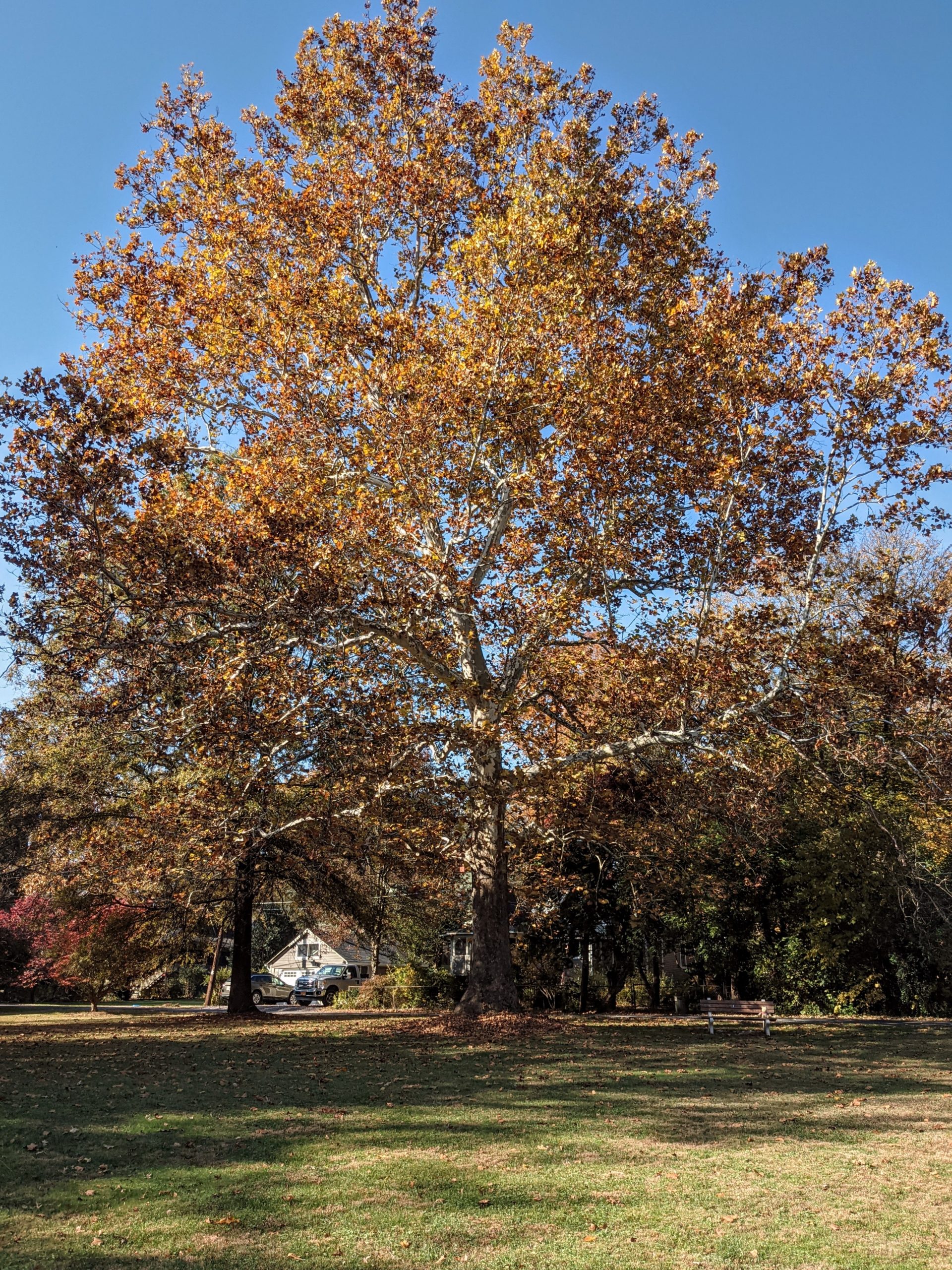Forestry & Beautification Committee
The Forestry and Beautification (F&B) Committee of the Town of Washington Grove oversees the health and maintenance of trees, shrubs and the general appearance of Town land in the residential area of town, including the parks.
The committee liaises to the Town Council through the Council member for Forestry & Beautification. The Woods Committee, including its liaison to the Council, restores and manages the Town’s forest preserve, which encompasses both the East and West Woods.
Through the F&B Committee, interested residents can be part of ensuring our continued tree canopy by:
- selecting new trees for planting each year,
- determining tree health needs,
- developing landscaping plans around public buildings and in our parks,
- supervising installation of new trees, and
- planting annual/perennial plants at the Town entrance and the Town Hall.
F&B meeting times are published in the Town Bulletin; we’d love to have you join us!
Meeting Agendas and Minutes
All agendas and minutes are in the Committee’s Google docs folder at bit.ly/WG-FBCmteDocs.
F & B Committee News
The latest news from the Committee is described in the F&B Committee section of the most recent monthly Town Bulletin.
Committee Documents and Town Policies Related to Tree Stewardship
- Policy for Residents on Town Tree Management
- Memorials Policy (2020, amended 2023) (PDF)
- 2023 Canopy Tree Replacement Proposal (PDF)
- Forest Stewardship Plan 2015 (Bill Bond/Parkton Woodland Services) (PDF) [CAUTION in viewing and downloading: this is a large file — over 40 MB]
- MD DNR Forest Stewardship Plan 2013 (PDF)
- Presentation: Restoration and Maintenance of Forest Preserves 2007 (PDF)
- Urban Forest Management Plan 2006 (Daniel Landry/DPL Consulting) (PDF)
- Report from the Tree Advisory Committee 2000 | PDF version
- Forest Management Plan 1983 (PDF)
- Forest Policy from the 1975 Master Plan (PDF)
- Forestry Committee Report 1973 (PDF)
- Report from the Special Forest Policy Committee 1972 (PDF)
Trees and Other Flora in the Grove
Magnolias
Of the approximately 100 species of magnolias, eight are native to the eastern U.S. Cultivars of the species preferred in trade, however, number in the thousands. Magnolias prefer acidic soil and full sun. Other common magnolia characteristics are attractive, smooth,...
Persimmon, Elm, Yellowwood
On October 9, the Town had 11 shade trees installed by Stadler Nursery. As we have tried to do in recent years, all were trees native to the U.S. Among the oaks, maples, and American beech, there are three are new species for us: American persimmon (Diospyros...
Hickories
Hickories are native trees important to wildlife and to humans well before the arrival of Europeans. One hickory, the pecan tree (Carya illinoensis), is one of the few commercially significant sources of food that is native exclusively to North America. The wood of...
Witch Hazel
A blooming Witch Hazel uplifts spirits with an early promise of spring showing off its strap-like brightly colored petals and enticing fragrance. These are the Witch Hazels most often noticed in the Washington area, a large upright spreading shrub or small tree that...
White Oak
With over 600 hundred species of oaks (genus Quercus), nearly 100 of them native to the U.S., it would seem a difficult group of trees to sort out, much less identify individual species. However, only a few dozen species will be encountered in our area, even including...
American Beech and Oriental Bittersweet
American Beech (Fagus grandifolia) is a slow growing, moderate sized native tree (up to 70’ tall and 100’ wide) that is abundant in eastern forests. The tree is often recognized from a distance by its attractive gray bark. A tree with names or initials carved into its...
Maples
The most common native maple found in Washington Grove is the red maple. Acer rubrum is the county tree of Montgomery County and is an important tree in Maryland hardwood forests. Leaves are opposite, as with all maples, and consist of 3 to 5 toothed lobes. Fruit is...
Red Buckeye and Amur Honeysuckle
Red Buckeye (Aesculus pavia) is a native understory tree with shiny, dark green palmate leaves (leaflets whose stems emanate from a single central point) that are attractive in spring and early summer. Its most striking feature are its red, tubular flowers that bloom...
Contact
Georgette Cole
Co-Chair
301-330-6740
[email protected]
Audrey Maskery
Co-Chair
240-205-4756
[email protected]
Doug Tallamy’s Presentation “Homegrown National Park”
In this talk, which was sponsored by the Town’s Sustainability, Forestry & Beautification, and Woods Committees, Dr. Doug Tallamy, T.A. Baker Professor of Agriculture and Natural Resources at the University of Delaware, explains to Grovers what they can do to support a healthy ecosystem and why that’s important. He describes an approach to conservation that empowers each of us to play a significant role in the future of the natural world. Watch the video here.

